#william hope hodgson
Text

THE HOUSE ON THE BORDERLAND, and Other Short Novels by William Hope Hodgson. (Sauk City, WI: Arkham House, 1946) Cover art by Hannes Bok. 3014 copy edition.
‘The House on the Borderland is unique in several ways. The narrative itself is a double-frame narrative: the editor of the volume is presenting a manuscript he found under mysterious circumstances, describing the account of two fishermen who themselves discovered a hand-written account of the cosmic haunting of a recluse’s remote home.
Additionally, the novel is one of the earliest examples of the departure of horror fiction from the Gothic style of supernatural, psychological hauntings, to more realist, science-fiction/cosmic horror themes. The recluse is, among other events, transported to a mysterious supra-universal plane populated by monsters and elder gods; and his house withstands assaults from legions of monsters as he travels across time and the solar system.
The book was very influential on H. P. Lovecraft, who himself was famous for the cosmic horror themes in his work. The concept of an uncaring, and even evil, universe that Lovecraft found so disturbing is front and center in this supremely strange novel.’
source [a newer print edition]
source [radio play]
source [audio from Libre Vox]
#book blog#books#books books books#book cover#horror#beautiful books#william hope hodgson#arkham horror#arkham house#hannes bok#cosmic horror#elder gods#radio play
228 notes
·
View notes
Text
Review: "Evil Roots: Killer Tales of the Botanical Gothic"

Authors: Nathaniel Hawthorne, Arthur Conan Doyle, Lucy H. Hooper, Charlotte Perkins Gilman, H. G. Wells, Edmond Nolcini, M. R. James, Ambrose Bierce, Howard R. Garis, William Hope Hodgson, Edith Nesbit, H. C. McNeile, Abraham Meritt, Emma Vane
Editor: Daisy Butcher
Date: 03/01/2023
Rating: ⭐⭐⭐⭐⭐
________________________________________________________
I think I ordered this book some time during summer, after I accidentally stumbled upon it on an online bookstore. I love anthologies and I love plants, so this title definitely intrigued me enough to order it. I finally decided to read it around Christmas and finished it during a recent trip, so it's officially my first finished book of the year.
"Evil Roots: Killer Tales of the Botanical Gothic" is an interesting anthology of short horror stories by quite a few well-known authors. From the creator of Sherlock Holmes, to the acclaimed writer of "The Yellow Wallpaper", all the way to the legendary H. G. Wells, this collections features some hidden gems of the late 19th and early 20th century. While the stories are certainly old-school, they could still be regarded as timeless classics and masterful creations.
Most stories revolve around the fascination of the exotic - of unknown plants that are in some way dangerous to humans (or other organisms) and which originate from far away places, like South America. There's mentions of exquisite poisonous flowers, murderous liana, mysterious wisteria, and the weirdest of them all - carnivorous plants.
It is interesting just how much the writers and, by default, the general public were fascinated by exotic flora which, in one way or another, transcended the known laws of nature. Plants were considered sedentary, passive, and at the bottom of the food chain, but as new discoveries were being presented and as more people, professionals and amateurs alike, from the western civilization started their expeditions in new places, society was being introduced with oddities that seemingly didn't follow any established rules. So while the horror in this collection is displayed through various flora, the true horror is derived from the simple fact that humans fear what they cannot understand. One of the most frightening things a person, especially a scientist, can experience is realizing that they will never be able to fully predict nature's capability to adapt and to evolve.
Of course, this theme goes hand in hand with the understanding that it is dangerous altering the natural order of things. While this could also be understood as criticism to the human tendency to play god, there isn't much religious commentary throughout the collection. The stories are centered around ecology, evolution, and biology, highlighting how humans shouldn't meddle with something as powerful as nature - which they will never fully understand, let alone be able to control. Even though the writers do create a feeling of dread through the fear of nature, the horror is actually realized through characters that underestimate its abilities and that have the need to disfigure nature in order to measure their own capabilities.
Furthermore, this collection highlights the uncomfortable fascination western civilization had with other cultures. The urge to study new exotic phenomena on their own accord, to test the limits of human science on something they don't fully understand with little to no regard of the laws of nature and the test subject's true needs, is somewhat perverse. These scientists are conducting experiments in uncontrolled environments, and playing with their test-subjects in order to test their own abilities and knowledge. It is a portrayal of poor research. They're acting out of curiosity with little to no regard of the consequences. It is not their subjects that are evil, for they have been brought up and mistreated in an environment completely unnatural to their habitat, but their tormentor, who butchers them through extreme studies. This is usually evident through a secondary character, most often a colleague, who tries to stop the scientist in their mad experiment before it's too late. The horror is, therefore, found in the abuse executed by the brazen oppressor, not in their vicious, abnormal creations.
The fact that the aforementioned themes barely scratch the surface of all the ideas featured in this collection, prove how layered and compelling all the featured stories are. The editor also did a marvelous job with a lovely foreword and an intriguing introduction to each of the authors and their respective work. Of course, as with every short story collection, not all works are equally strong, but "Evil Roots: Killer Tales of the Botanical Gothic" is still a gorgeous anthology and a noteworthy testament to a relatively overlooked category of horror.
#evil roots#evil roots: killer tales of the botanical gothic#daisy butcher#nathaniel hawthorne#arthur conan doyle#lucy h. hooper#lucy h hooper#charlotte perkins gilman#h g wells#edmond nolcini#m. r. james#h. g. wells#ambrose bierce#howard r. garis#howard r garris#william hope hodgson#edith nesbit#h. c. mcneile#m c mcneile#abraham merritt#emma vane#horror#botany#botanical horror#speculative fiction#review#book review#rc2024#2024#reading challenge
42 notes
·
View notes
Text



Matango (マタンゴ Matango) is a 1963 tokusatsu horror film directed by Ishiro Honda and written by Takeshi Kimura from a story by Shinichi Hoshi and Masami Fukushima, with special effects by Eiji Tsuburaya. Produced by Toho, it is a loose adaptation of the 1907 short story "The Voice in the Night" by William Hope Hodgson. It stars Akira Kubo, Kumi Mizuno, Hiroshi Koizumi, Kenji Sahara, Hiroshi Tachikawa, Yoshio Tsuchiya, and Miki Yashiro. The film was released to Japanese theaters by Toho on August 11, 1963. American International Television released an English-dubbed version of the film to American television syndication in 1965 under the title Attack of the Mushroom People.
Matango follows a group of seven wealthy friends from Tokyo whose yacht is caught in a storm and wrecked on a seemingly uninhabited island in the Ogasawara chain. After examining another derelict ship on the island, they learn that its crewmembers were investigating the effects of nuclear testing on the island and gradually vanished after consuming the bizarre native mushrooms growing on the island which they called "Matango." With food and resources becoming more and more scarce, the survivors turn against each other and one-by-one fall under the influence of the Matango, which they find is slowly mutating those who eat it into grotesque fungal creatures.
#attack of the mushroom people#japanese film#matango#1963#60s films#60s horror#1960s#60s#tokusatsu#ishiro honda#eiji tsuburaya#toho#the voice in the night#william hope hodgson#1965#1907#mushrooms#fungi#fungi people#mushroom#fungus#fungus among us#fungal creatures#i watched this on tubi#horror film#horror films#film poster art
41 notes
·
View notes
Photo
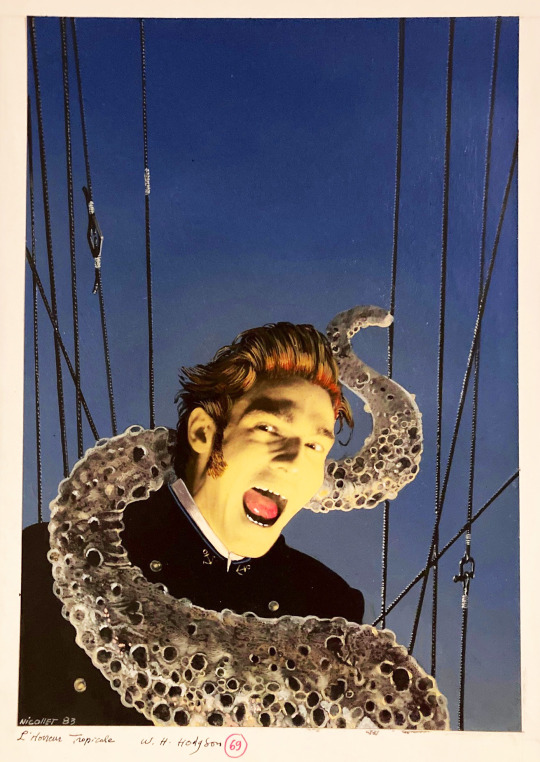
Jean Michel Nicollet, 'L'horreur Tropicale’, W. H. Hodgson', 1983
Source
75 notes
·
View notes
Text
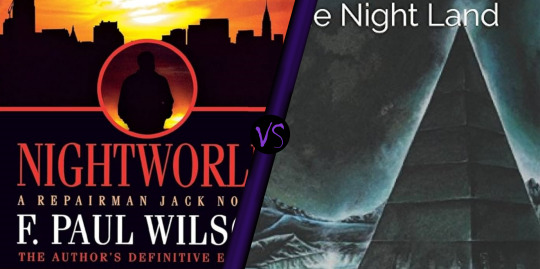
Nightworld (F. Paul Wilson)
"At the start of Nightworld the sun rises five minutes too late. Repairman Jack can't understand why the scientists are so disturbed by this, but when portals to Another Dimension open all over the world, spewing a horde of Eldritch Abominations every night, the fact that every day the sun inexplicably rises later and sets earlier than the last becomes a reason for serious panic."
The Night Land (William Hope Hodgson)
"The Sun has gone out and the Earth is lit only by the glow of residual vulcanism. The last few millions of the human race are gathered together in the Last Redoubt, a gigantic metal pyramid, nearly eight miles high, which is under siege from unknown forces and Powers outside in the dark. These are held back by a shield known as the "air clog", powered from a subterranean energy source called the "Earth Current". For thousands of years vast living shapes known as the Watchers have waited in the darkness near the pyramid. It is thought that they are waiting for the inevitable time when the Circle's power finally weakens and dies. Other living things have been seen in the darkness, some of unknown origins, and others that may once have been human."
#dark poll#the dark#poll#the magnus archives#leitner tournament#Nightworld#Repairman Jack#F. Paul Wilson#The Night Land#William Hope Hodgson
8 notes
·
View notes
Photo
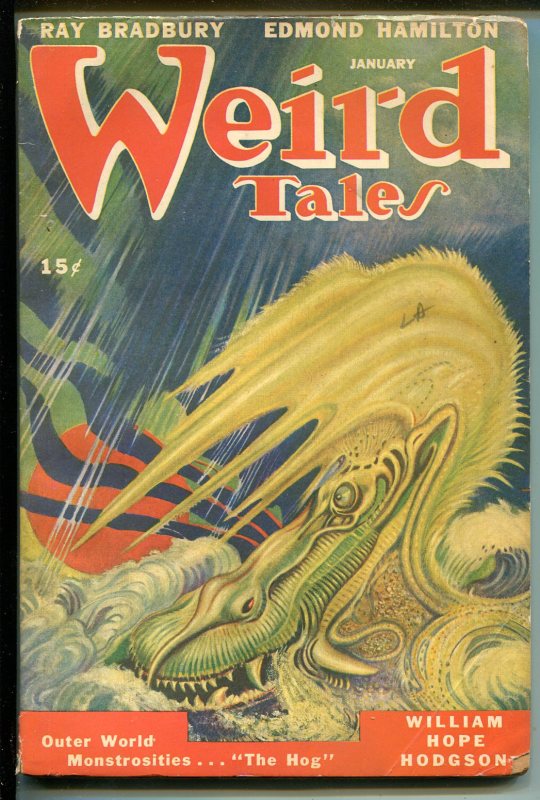
(via Weird Tales 1/1947-monster cover-pulp horror-Bradbury-Hamilton-VG: (1947) Magazine / Periodical | DTA Collectibles)
Weird Tales (1947) - Art by A. R. Tilburne
23 notes
·
View notes
Text

Bro... 💀
#😱#the house on the borderland#william hope hodgson#cosmic horror#lovecraft's influences#lovecraft's library#literature#books#booklr#bookblr#dark academia#classic academia#chaotic academia
8 notes
·
View notes
Text
Cracking open some William Hope Hodgson (1877–1918) (my beloved) again this morning to see what’s going on in here:

Firstly I love the words “ghost finder.” Secondly, I’m delighted to find my second favourite Victorian-era framing device:
I, the narrator am not interesting myself… but I DO have an interesting friend
My interesting friend likes to invite me to dinner so he can tell me interesting stories
I write these stories down for profit
(My favourite Victorian framing device is when you add another layer of removal and ideally also a written account, aka: “I, the narrator, am not interesting, BUT I met a slightly interesting guy who told me about a strange letter he got from his EXTREMELY interesting friend”)
Anyway, so the narrator is meeting Carnacki for dinner at his house because he sent an invitation card to the narrator and three other friends saying “boys I am back in town and I have gossip.”
The names of the friends are great Victorian “I refer to my friends by their surnames” material:
Arkright
Jessop
Taylor
The name of the NARRATOR:
Dodgson
Let me just hold up the author’s name on a big sign over my head;

Imagine if you were reading a Sherlock Holmes story by everyone’s friend Arthur Conan Doyle and you cracked it open to find out that Sherlock’s best friend’s name was not Watson, but, like… Boyle.
Now THIS is fiction from 1910!!!!!!!!!
#william hope hodgson#I am so psyched for this guy to describe his friend describing a time he found a ghost#an important thing about William Hope Hodgson: man spent years in the navy and absolutely fucking hated it. This guy LOATHES the ocean#so whenever I read one of his stories I’m paying attention to important themes like: how does this make me the reader hate the ocean also#I don’t… have a tag for reading fiction. shit. well it’ll come to me
7 notes
·
View notes
Text

THE THRILL OF HORROR (Taplinger., 1975)
Inside: stories by H Rider Haggard, William Hope Hodgson & the rest of the gang...
#H Rider Haggard#pulp#horror#pulp horror#pulps#pulp art#spiders#spider#horror pulp#william hope hodgson#weird#weird fiction#uncanny#uncanny horror#70s horror#70s pulp#1970s pulp#1970s horror
93 notes
·
View notes
Text
I'm reading The House on the Borderland by William Hope Hodgson (cosmic horror novel that was an influence on Lovecraft) right now, and it reminds me a lot of Minecraft, of all things. Two guys go on a fishing trip and find a chasm containing the ruins of a house that's been abandoned for who knows how long, and in this house is an account of a recluse having to defend the home with the help of his dog from pig-men who try to break in at night. Also this passage:
Still, when I looked more intently, I was unable to say that it was really mist; for it appeared to blend with the plain, giving it a peculiar unrealness, and conveying to the senses the idea of unsubstantiality.
This sounds like how the game looks when you set render distance to tiny.
#minecraft#the house on the borderland#william hope hodgson#book discussion#original content do not steal
18 notes
·
View notes
Text
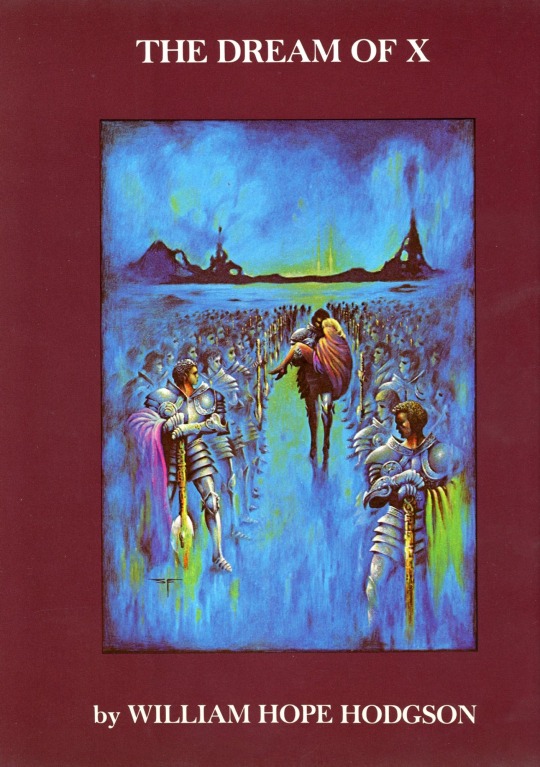


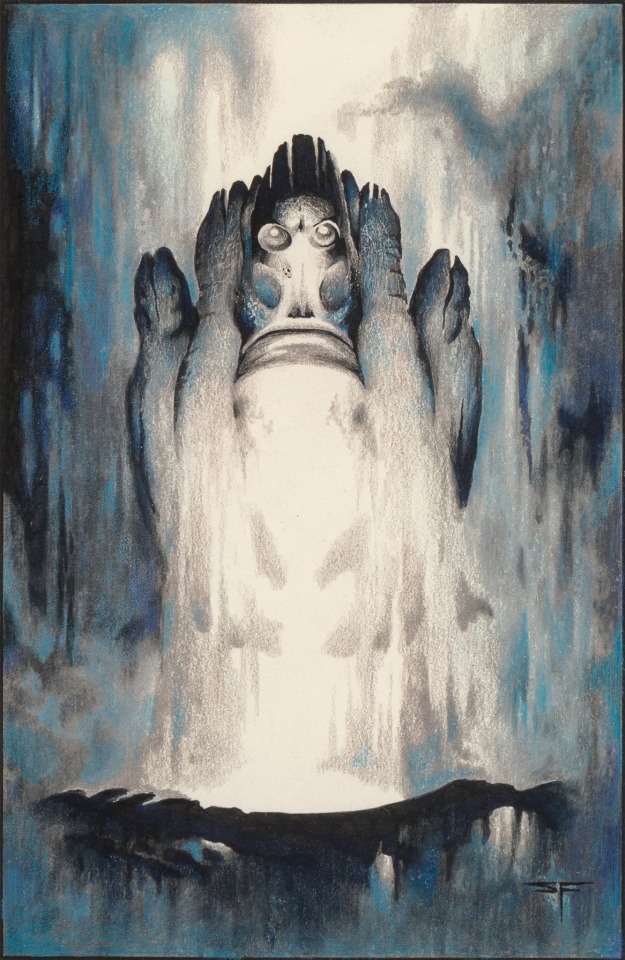


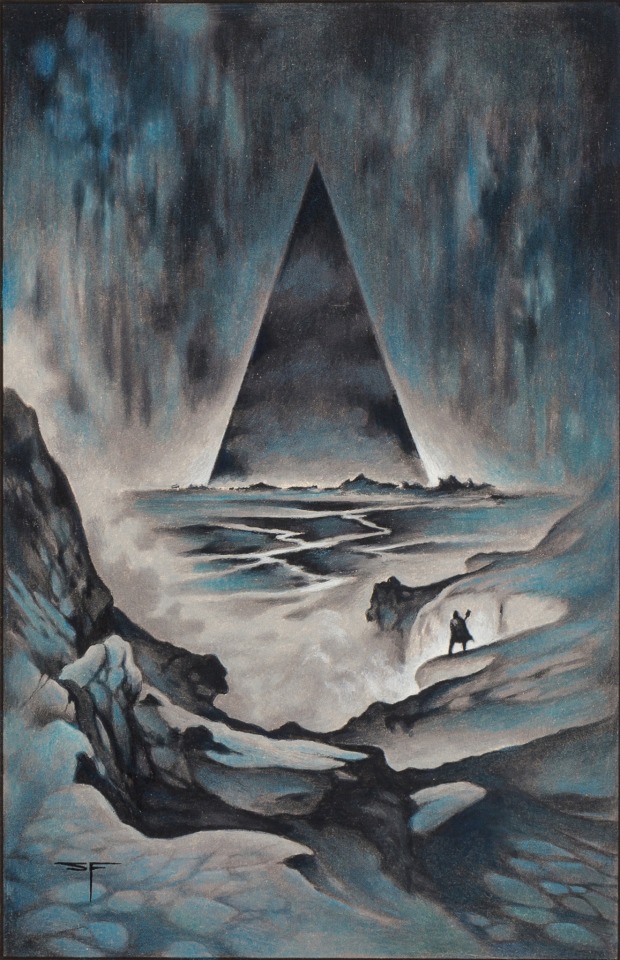
Stephen Fabian, illustrations for William Hope Hodgson, "The Dream of X" (Donald M. Grant, 1977): 1) Cover, 2) “Watcher of the South East,” 3) “The Watcher of the North East,” 4) “The North West Watcher,” 5) “The Light,” 6) “South-West Watcher,” and 7) “The Lesser Redoubt.”
13 notes
·
View notes
Text

'The House in the Arena' - Illustration for an illustrated version of William Hope Hodgson's 'The House on the Borderland' that I've been toying with for years.
7 notes
·
View notes
Text

William Hope Hodgson - The House on the Borderland (Arkham House, 1946).
#william hope hodgson#the house on the borderland#arkham house#horror literature#cosmic horror#greatest horror novel of all times
63 notes
·
View notes
Text
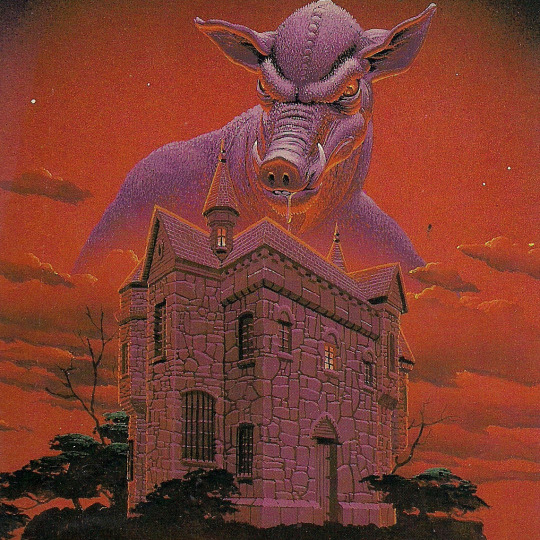
The House On The Borderland, William Hope Hodgson.
5 notes
·
View notes
Text
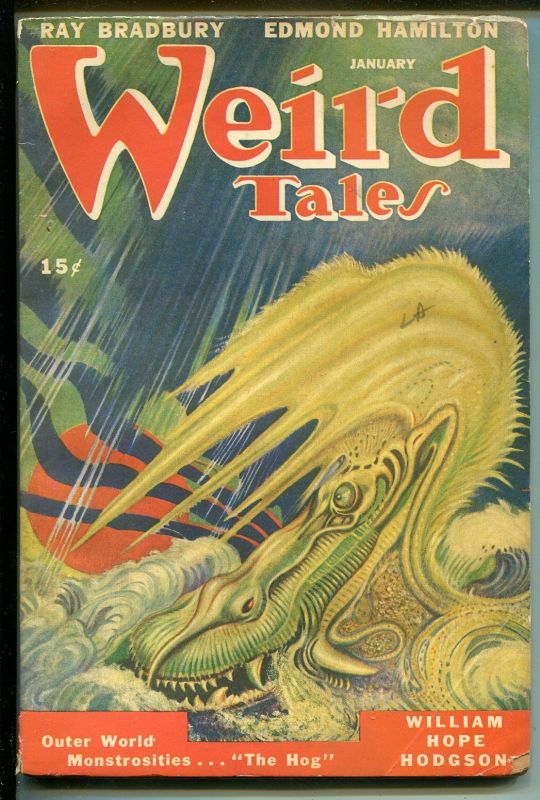

Vintage Pulp - Weird Tales (Jan1947)
Art by A. R. Tilburne
#Pulp#Weird Tales#Horror#AR Tilburne#William Hope Hodgson#Monsters#Vintage#Art#Pulp Art#Pulp Illustration#Ads#Advertising#Ray Bradbury#Edmund Hamilton#1947#1940s#40s
57 notes
·
View notes
Text
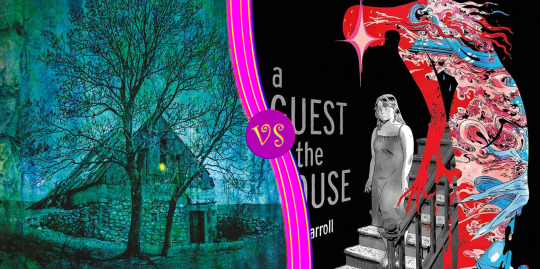
The House on the Borderland (William Hope Hodgson)
"Fishing buddies Tonnison and Berreggnog didn't bargain for what they found while on holiday near the remote Irish village of Kraighten. While walking along the riverbank, they're astonished to see that the river abruptly ends. It reappears as a surge from a chasm some 100 feet below the edge of an abyss, where also stand the remains of an oddly shaped house, half-swallowed by the pit.
Exploring the ruins, the friends discover the moldering journal of an unidentified man--the Recluse--who had lived in the house with his sister and faithful dog years ago. Its pages reveal the man's apparent descent into madness--how else to account for his chronicles of otherworldly visions, trips to other dimensions, and attacks by swine-like humanoid creatures that seem to have followed him home? After one particular vision in which he witnesses the end of the earth and time itself, the Recluse awakens in his study to find nothing has changed--except that his dog Pepper is dead, dissolved into a pile of dust. And then the "swine things" return…"
A Guest in the House (Emily Carroll)
"After many lonely years, Abby’s just gotten married. She met her new husband—a recently widowed dentist—when he arrived in town with his young daughter, seeking a new start. Although it’s strange living in the shadow of her predecessor, Abby does her best to be a good wife and mother. But the more she learns about her new husband’s first wife, the more things don’t add up. And Abby starts to wonder . . . was Sheila’s death really by natural causes? As Abby sinks deeper into confusion, Sheila’s memory seems to become a force all its own, ensnaring Abby in a mystery that leaves her obsessed, fascinated, and desperately in love for the first time in her life"
While most riffs on the Bluebeard story are probably slaughter, buried, or eye aligned, much of the horror in this story is the uncertainty and loss of a clear sense of reality. Also the art of Sheila feels very spiral.
#spiral poll#the spiral#poll#the magnus archives#leitner tournament#The House on the Borderland#William Hope Hodgson#A Guest in the House#Emily Carroll
11 notes
·
View notes